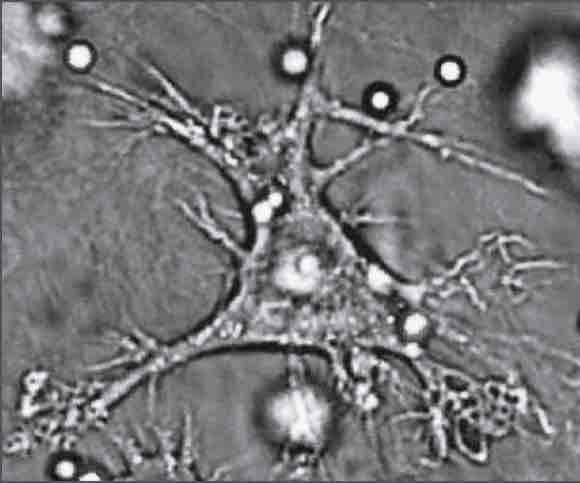Dendritic cells are present in lymphoid organs, the epithelia of the skin, the gastrointestinal and respiratory tracts, and in most parenchymal organs. These cells are identified morphologically by their membranous projections that resemble spines . All dendritic cells are thought to arise from bone marrow precursors. Most, called myeloid dendritic cells, are related in lineage to mononuclear phagocytes. Immature dendritic cells (e.g. Langerhans cells of the epidermis) are located in main portals of entry of microbes (skin and gut epithelia). The function of epithelial dendritic cells is to capture microbial protein antigens and to transport the antigens to draining lymph nodes. During their migration to the lymph nodes, the dendritic cells mature to become extremely efficient at presenting antigens and stimulating naive T cells, hence their classification as antigen presenting cells. Mature dendritic cells reside in the T cell zones of the lymph nodes, and in this location they display antigens to T cells. Subsets of dendritic cells can be distinguished by the expression of cell surface markers. Different subpopulations of dendritic cells may stimulate distinct types of T cell effector responses. Some may even inhibit T cell activation.

Dendritic cell
Dendritic cell characterized by membranous projections that resemble spines.
Dendritic cells are constantly in communication with other cells in the body. This communication can take the form of direct cell-to-cell contact based on the interaction of cell-surface proteins. An example of this includes the interaction of the membrane proteins of the B7 family of the dendritic cell with a CD28 cell surface molecule present on the lymphocyte. However, the cell-cell interaction can also take place at a distance via soluble factors such as cytokines. For example, stimulating dendritic cells in vivo with microbial extracts causes the dendritic cells to rapidly begin producing interleukin 12 (IL-12). IL-12 is a signal that helps differentiate naive CD4 T cells into a helper T cell phenotype. The ultimate consequence is priming and activation of the immune system for attack against the antigens which the dendritic cell presents on its surface.